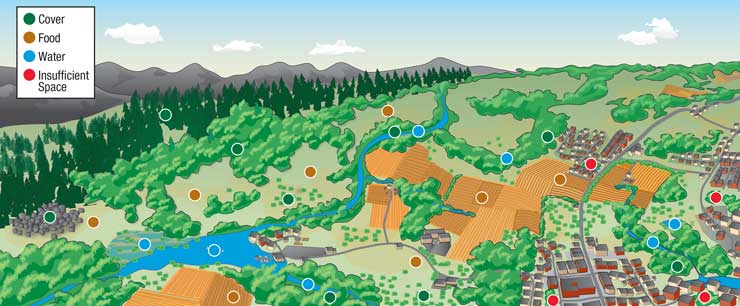What You Learned

The goal of wildlife conservation is to ensure the wise use and management of renewable resources without wasting them. Preservation saves natural resources with no consumptive use of them. Both are necessary to sustain resources for future generations.

Wildlife management is the science and practice of maintaining wildlife populations and their habitats. Wildlife managers know that nature overproduces its game resources and that good management yields a surplus that can be harvested by hunters.

The most essential aspect of wildlife management is managing habitat for game species. This provides a species with the essential elements needed to meet its needs: food, water, cover, space, and an arrangement of these elements that lets animals meet their needs.

Carrying capacity is the number of animals a given habitat can support all year long without damaging the animals or the habitat.

Factors that can limit the potential production of wildlife include disease/parasites, starvation, predators, pollution, accidents, old age, and hunting.